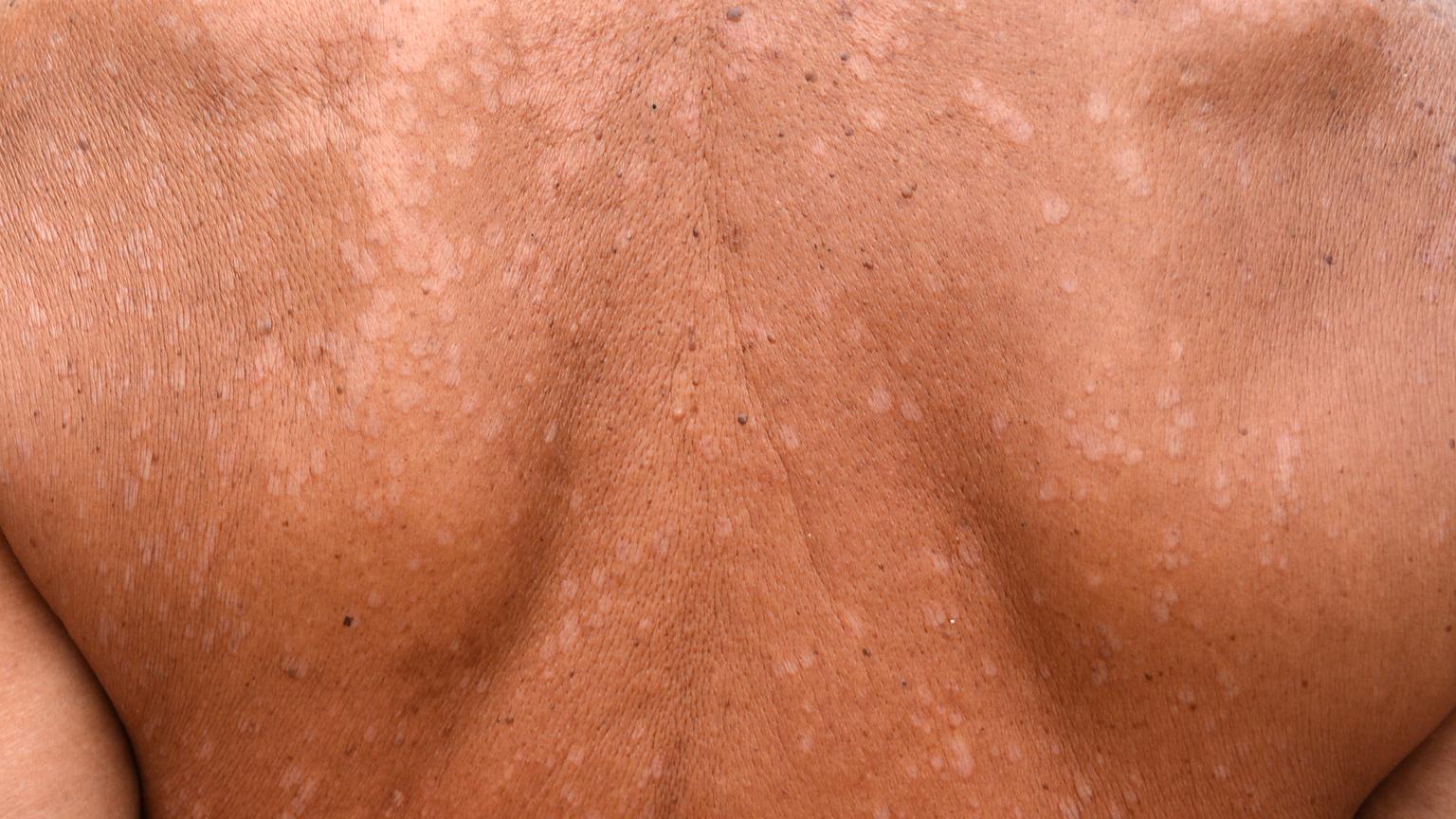how do you know if you have tinea versicolor Tinea versicolor
Tinea Versicolor: What You Should Know Tinea versicolor, also known as pityriasis versicolor, is a common skin condition that affects many people worldwide. It is caused by an overgrowth of a type of yeast called Malassezia, which naturally resides on the skin’s surface. In most cases, tinea versicolor manifests as small, discolored patches on the skin. These patches can be pale, pink, tan, or dark brown in color, and they often appear on the chest, back, neck, and arms. One of the main factors that contributes to the development of tinea versicolor is an imbalance of the yeast on the skin. This imbalance can be triggered by a variety of factors, such as warm and humid weather, excessive sweating, oily skin, hormonal changes, and a weakened immune system. Individuals who have a weakened immune system, such as those with HIV/AIDS or undergoing chemotherapy, are more susceptible to tinea versicolor. The symptoms of tinea versicolor can vary from person to person. Some individuals may experience itching and irritation, while others may not have any symptoms at all. The patches caused by tinea versicolor are usually not painful or harmful, but they can be bothersome from an aesthetic standpoint. Many people feel self-conscious about the appearance of the patches, especially when they appear on visible areas of the body. Treatment options for tinea versicolor primarily aim to eliminate the overgrowth of yeast and reduce the appearance of the patches. The most common treatment approach involves the use of antifungal creams, lotions, or shampoos, which can be applied directly to the affected areas. These products work by inhibiting the growth of Malassezia and restoring the natural balance of the skin. In some cases, oral antifungal medications may be prescribed for severe or recurrent cases of tinea versicolor. Additionally, there are several lifestyle measures that can help prevent the recurrence of tinea versicolor. These include keeping the skin clean and dry, avoiding excessive sweating, wearing loose-fitting clothing, and avoiding prolonged exposure to hot and humid environments. It is also important to note that tinea versicolor is not contagious, so there is no need to worry about spreading the condition to others. In conclusion, tinea versicolor is a common skin condition caused by an overgrowth of yeast on the skin’s surface. While it can be bothersome from a cosmetic perspective, it is not harmful or contagious. With appropriate treatment and preventive measures, individuals can effectively manage and reduce the recurrence of tinea versicolor. If you suspect you may have tinea versicolor, it is best to consult with a dermatologist for an accurate diagnosis and personalized treatment plan. + — Main sources — 1. [Image 1](https://images.squarespace-cdn.com/content/v1/5eb88cc7c7eb587825bc2263/35d18511-f561-4007-8d92-bfa85e4d4800/IMG_4245.jpg): Tinea Versicolor: What You Should Know — SSDP 2. [Image 2](https://cdn05.zipify.com/iy00X-xvHSgwW1sXGK0GnFlGfSQ=/fit-in/1536x0/0b0acd3b83d24a4c88af7197e27a05cb/tineamolluscum.jpg): How Do You Get Tinea Versicolor – Naturasil
If you are searching about Tinea Versicolor Treatment you’ve came to the right place. We have 5 Pics about Tinea Versicolor Treatment like Tinea Versicolor: Causes, Symptoms, Diagnosis, & Treatment, How Do You Get Tinea Versicolor – Naturasil and also Tinea Versicolor: What You Should Know — SSDP. Here you go:
Tinea Versicolor Treatment
 www.slideshare.nettinea versicolor
www.slideshare.nettinea versicolor
How Do You Get Tinea Versicolor – Naturasil
 www.naturasil.comtinea versicolor delving
www.naturasil.comtinea versicolor delving
Tinea Versicolor: Causes, Symptoms, Diagnosis, & Treatment
 www.emedihealth.comtinea versicolor symptom darker infection
www.emedihealth.comtinea versicolor symptom darker infection
Tinea Versicolor: What You Should Know — SSDP
 www.southshorederm.comEverything You Need To Know About Tinea Versicolor | Skin And Cancer
www.southshorederm.comEverything You Need To Know About Tinea Versicolor | Skin And Cancer
![]() www.skinandcancerinstitute.comTinea versicolor: causes, symptoms, diagnosis, & treatment. Tinea versicolor. Tinea versicolor treatment
www.skinandcancerinstitute.comTinea versicolor: causes, symptoms, diagnosis, & treatment. Tinea versicolor. Tinea versicolor treatment